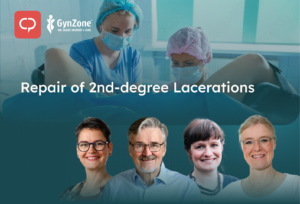
Academy, a daughter company of Docquity, caters to the broader realm of healthcare professionals across Southeast Asia. While Docquity is a LinkedIn-like network solely for doctors to connect and exchange knowledge, the Academy is a medical course platform that extends this learning environment to a wider demographic including nurses, pharmacists, and occasionally, the general public.
Academy is different from other course platforms like Coursera and Udemy because we are specifically focused on healthcare professionals in Southeast Asia. With more than 400,000 doctors already on Docquity, we have a unique reach and audience within the healthcare community that is unmatched by other platforms. Additionally, our platform is designed with the needs and concerns of healthcare professionals in mind, and our team is dedicated to supporting and working with healthcare experts to create valuable and relevant courses for the community. This means the courses are much more specific and tailored to the needs of the HCPs, giving them more value and relevancy than other platforms.
The cost varies depending on the course content, duration, and the instructor. However, we strive to make our courses affordable and valuable, ensuring you get the best return on your investment.
The average rates per course are about 200,000 IDR / 60 MYR / 725 PHP / 14 USD.
At Academy, we believe that any topic can be a great course as long as it is designed well and provides value to the community. Therefore, we do not approach the process of online education based solely on trendy topics. Instead, we focus on the value that a course can bring to healthcare professionals.
As for trendy topics, it can vary based on the current situation and the needs of the community. However, we always encourage experts to share their knowledge and experiences on a topic that they are passionate about and feel can be valuable to other doctors. Even if the topic is new and no one else has covered it, we believe that it can still be a great course.
We will do our best to support you in creating, promoting, and delivering your course, so don’t hesitate to reach out to us if you have any questions or need guidance in the process.
Building a course under Academy involves the following steps:
- Identify your area of expertise and the topic you want to teach. It can be a new and unique topic or a popular one, as long as you are an expert in it and believe it can be valuable to other healthcare professionals.
- Create a course outline. Break down the topic into relevant modules and classes, and plan out the content and structure of each lesson.
- Develop the course content. Create engaging and informative materials such as presentations, quizzes, and assignments that will help your students learn and retain the information.
- Test and refine your course. Get feedback from peers or beta testers and make any necessary adjustments to ensure the course is effective and user-friendly.
- Prepare to launch. We will provide you with the tools, resources, and support you need to launch your course.
- Market your course. We will help you to promote your course to the Docquity community and beyond. Having said that, we do encourage you to actively promote via your network and social media channels.
- Deliver the course and engage with your students. You will use our platform to deliver the course, interact with students, and monitor their progress.
- Continuously improve your course. We encourage course creators to continuously improve their courses by collecting feedback and updating content to make sure it’s always up-to-date and relevant.
When creating a course on Academy, we use a variety of platforms to ensure the best learning experience for our students. Zoom is used for the live course, where the instructor can interact with students in real time. We also use our proprietary software for course management and promotion, as well as social media channels, to reach a wider audience. We typically use PowerPoint or PDFs for the presentation. Other similar tools may also be used depending on the specific needs of the course and instructor. The main focus is to make sure the student has the best experience possible while learning.
When it comes to certification for courses on Academy, it works in two ways. If the course offers CME/CPD/SKP credits, the certification comes from a third-party medical association. In this case, the application process can take anywhere from 3 to 6 months as the association needs to review and approve the course. This process can make the course more appealing to healthcare professionals, but it also requires more time and effort to organize.
On the other hand, if the course does not offer CME/CPD/SKP credit, Docquity Academy will be responsible for reviewing the course and issuing the certification. This process is typically faster, but it is important to note that the certification may not hold the same weight as one from a medical association. We will help you to determine which model is best for your course.
A webinar is typically a live, online event that is conducted in real time and is often presented by an expert or speaker. Webinars are often interactive, allowing participants to ask questions and engage with the presenter in real time. They are usually focused on a specific topic or theme and often have a limited duration of 1-2 hours.
A course, on the other hand, is typically a more in-depth, self-paced learning experience that is designed to cover a wide range of topics or concepts. It is usually broken down into smaller modules or lessons and may include a variety of different types of content such as videos, readings, quizzes, and assignments. Unlike webinars, courses can be taken at any time and can span over a period of weeks or months, unless the course is *live* in which case it will have a specific date and time. They are more structured and have a clear set of objectives and learning outcomes.
Should you encounter any technical difficulties, please reach out to our support team at courses@docquity.com. They are dedicated to resolving your issues promptly to ensure a seamless learning experience.
To make money through Academy, creators have the option to either choose the “*platform*” package or the *”co-create a course”* package.
Platform — Under the “*platform*” package, creators have access to all the tools necessary to start their course and promote it, but it is their responsibility to prepare the materials and promote the course. In this package, creators earn 80% of all net revenues while Academy collects 20%.
Co-create a course — On the other hand, under the *”co-create a course”* package, both Academy and the creator split the work and net revenues equally. The amount of money each creator can expect to make will vary depending on the topic and quality of content, and we cannot guarantee a specific amount of earnings.
- Clearly define the learning objectives and outcomes for the course.
- Use a variety of instructional methods such as videos, quizzes, and interactive activities to engage learners.
- We will support you in filming any recorded videos you might have in mind.
- Make sure the course is easy to navigate and has a logical structure.
- Utilize high-quality and easy-to-understand presentations to enhance the learning experience.
- Regularly check and update the course to keep the information current and relevant.
- Provide opportunities for learners to interact with the instructor and other learners through discussion boards or group projects.
- Include assessments and quizzes to evaluate learners’ understanding of the material.
- Provide a certificate or other form of recognition upon completion.
- Properly proofread, edit, and test the course before publishing it.
- Continuously gather feedback and improve the course based on it.
When pricing your course, it’s important to take into account several factors to ensure that you are pricing your course competitively and fairly for your target audience. Some best practices for pricing your course include:
- Researching the market: Look at similar courses in your niche and see how they are priced. Take into account the length, format, and level of expertise required for the course when comparing prices.
- Considering your costs: Make sure to factor in any costs associated with creating and delivering your course, such as equipment, software, and marketing expenses.
- Balancing affordability and value: While you want to make a profit from your course, you also want to make sure it’s affordable for your target audience.
- Offering different pricing options: Consider offering different pricing options, such as early bird discounts, payment plans, or bundled packages. This can help you appeal to a wider range of customers.
- Testing different prices: Try out different prices and see which one converts the most sales. We can help you with A/B testing to compare different pricing strategies and see which one works best.
- Regularly re-evaluating your pricing: Keep an eye on the market and your competition and if necessary adjust pricing when launching new courses in the future.
The difference between running a course that offers SKP/CPD/CME points and a course without is mainly in the approval process. A course that offers SKP/CPD/CME points needs to be approved by a medical association, which can take 3 to 6 months. This approval process can be more time-consuming and complex, but it can also make the course more appealing to healthcare professionals, as it can be used for continuing education. On the other hand, a course without credits does not require approval from a medical association and can be launched more quickly, but it may not have the same level of credibility or appeal to certain audiences. Ultimately, it depends on the goals of the course and the audience it is targeting. We have seen widely successful courses with and without SKP/CPD/CME points and we are happy to have a conversation with you to determine the best model for your course.
To give you an example, in Indonesia the typical cost for a 2 hours live session is about 4,000,000 IDR / 400 SGD / 305 USD. Such costs are paid to relevant medical associations and does not cover the costs of following up and coordinating with the association. Please note this expenses will be deducted from the gross revenues of the course you are running, so plan accordingly.
If a course does not get enough participants, there are a few options that can be considered.
One option is to reduce the price of the course to make it more accessible to potential participants.
Another option is to record the course and run it as a course on demand, which will give it more time to collect enough participants.
We can also consider postponing the course to a later date when more participants are available. In some cases, if the course does not meet the minimum number of participants, it may need to be canceled.
It is important to note that Academy does not take responsibility for courses that are not successful, but we work hard alongside the course creators to support them in finding a solution that works best for them.



